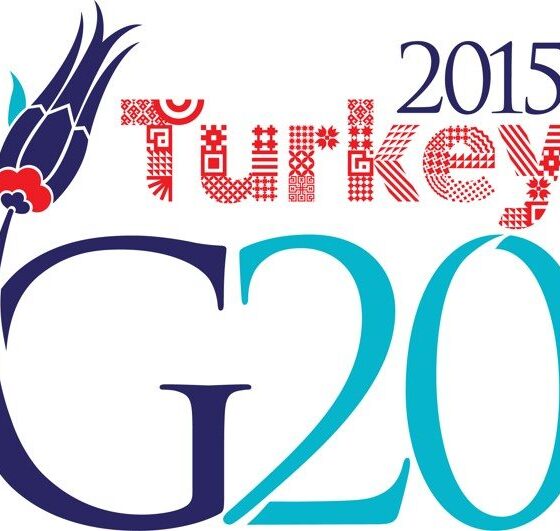

Energy
G20 Climate Action – A turning point?
Climate action by the G20 has reached a turning point, with per capita emissions falling in eleven members, and renewable energy growing strongly, but they must all urgently decarbonise their economies to meet an internationally agreed target to limit global warming to below 2 degrees Celsius, finds a country comparison released today by Climate Transparency.
Climate Transparency is a new initiative, bringing together expert groups for the assessment of climate action worldwide, to provide a more independent, credible and comprehensive view, and so boost public policy awareness and drive ambition.
The initiative has drawn upon detailed analysis by leading climate policy researchers, to compare the emissions, share of renewable energy, decarbonisation levels and policy performance of G20 countries, ahead of a summit of the world’s leading economies in Turkey on November 15-16. The comparison combined analysis by the Climate Action Tracker and the Climate Change Performance Index.
The analysis shows that if present emissions trends continue, the world will breach the 2°C target, On a positive note, however, the level of renewable energy has seen strong growth in three quarters of G20 members, while the first signs can be detected of decarbonisation, and of a breakthrough in climate diplomacy.
G20 countries represent two thirds of the world population, and four fifths of global economic output, as measured by gross domestic product (GDP). Collectively, they emit three quarters of global annual greenhouse gases (GHG). Because of their political and economic clout, they drive global trends in greenhouse gas emissions.
Average per capita greenhouse emissions in G20 countries is nearly 11 tonnes of carbon dioxide equivalent (tCO2e). To meet the 2°C target, global average per capita emissions should be around 1-3 tCO2e, by 2050. Next month, countries are expected to reach in Paris a new global agreement to limit climate change. However, even if countries implemented the climate policy plans (called INDCs) that they have submitted to the Paris conference, global temperatures would rise to about 2.7°C above preindustrial levels[1], according to the Climate Action Tracker.
However, there are now encouraging signs of a turning point:
– Per capita emissions are falling in eleven of G20 members.
– In the past five years, 15 of the G20 countries have seen double digit growth in renewable energy production
– There are strong indications that total global energy-related carbon dioxide emissions have stopped rising in 2014, the first such reversal in annual emissions growth in the industrial era, aside from periods of serious economic crisis.
– In both the United States and the European Union, there is now evidence for a decoupling of economic growth from carbon emissions, where both the energy intensity of the economy and carbon intensity of energy supply is falling.
– In climate diplomacy, the world’s two biggest carbon emitters China and the United States last year agreed targets to curb emissions beyond 2020, representing their most significant bilateral agreement on climate change
– Scientific evidence for multiple benefits from reduced fossil fuel use is increasingly robust, including: reduced deaths from cleaner air; higher infrastructure investment; enhanced productivity and energy efficiency; and better energy security and balance of payments
Alvaro Umaña, former environment minister of Costa Rica and Co-Chair of Climate Transparency said: “The good news is that we know that climate policy is working, and that we may have reached a turning point. But G20 countries need to scale up their ambition, if we are to meet the internationally agreed target to limit global average warming to below 2°C. Countries with high cumulative and present emissions have a special responsibility not only to reduce their emissions, but also to help those countries most affected by climate change.”
His Co-Chair, Peter Eigen, added: “With Climate Transparency we are providing credible and transparent information about countries’ mitigation efforts to stimulate a race to the top. Through the experience of the Corruption Perception Index of Transparency International, we have seen how such transparency can create peer pressure.” Peter Eigen is also the Founder and Chair of the Advisory Council of Transparency International.
Niklas Höhne from NewClimate Institute, one of the four organisations behind the Climate Action Tracker, said: “The INDCs submitted by more than 150 countries have been a big success, never before have so many countries developed and shared plans to reduce greenhouse gas emissions. They are not yet enough – our analysis shows that even if they were fully implemented, the global average warming would still be in the region of 2.7°C, and only ‘likely’ below 3°C. But they bend the curve of emissions downwards. And with the planned review process, they can and must be strengthened, the earlier the better.”
Jan Burck from Germanwatch, one of the two organisations behind CCPI, said: “Renewables are the big success story of the last 15 years, hardly anybody would have believed that they would grow so strongly. And our analysis shows that in many countries economic growth has started to decouple from the growth of CO2 emissions.”
Climate Transparency’s comparison of climate mitigation actions across the G20 is based on detailed country profiles and key indicators, supplied in the Climate Transparency’s first report, “How do G20 countries perform on climate change? Assessing mitigation”. The findings are based on national assessments by the Climate Action Tracker (CAT) and the Climate Change Performance Index (CCPI).


 Environment10 months ago
Environment10 months agoAre Polymer Banknotes: an Eco-Friendly Trend or a Groundswell?

 Environment12 months ago
Environment12 months agoEco-Friendly Home Improvements: Top 7 Upgrades for 2025

 Features9 months ago
Features9 months agoEco-Friendly Cryptocurrencies: Sustainable Investment Choices

 Features11 months ago
Features11 months agoEco-Friendly Crypto Traders Must Find the Right Exchange





























